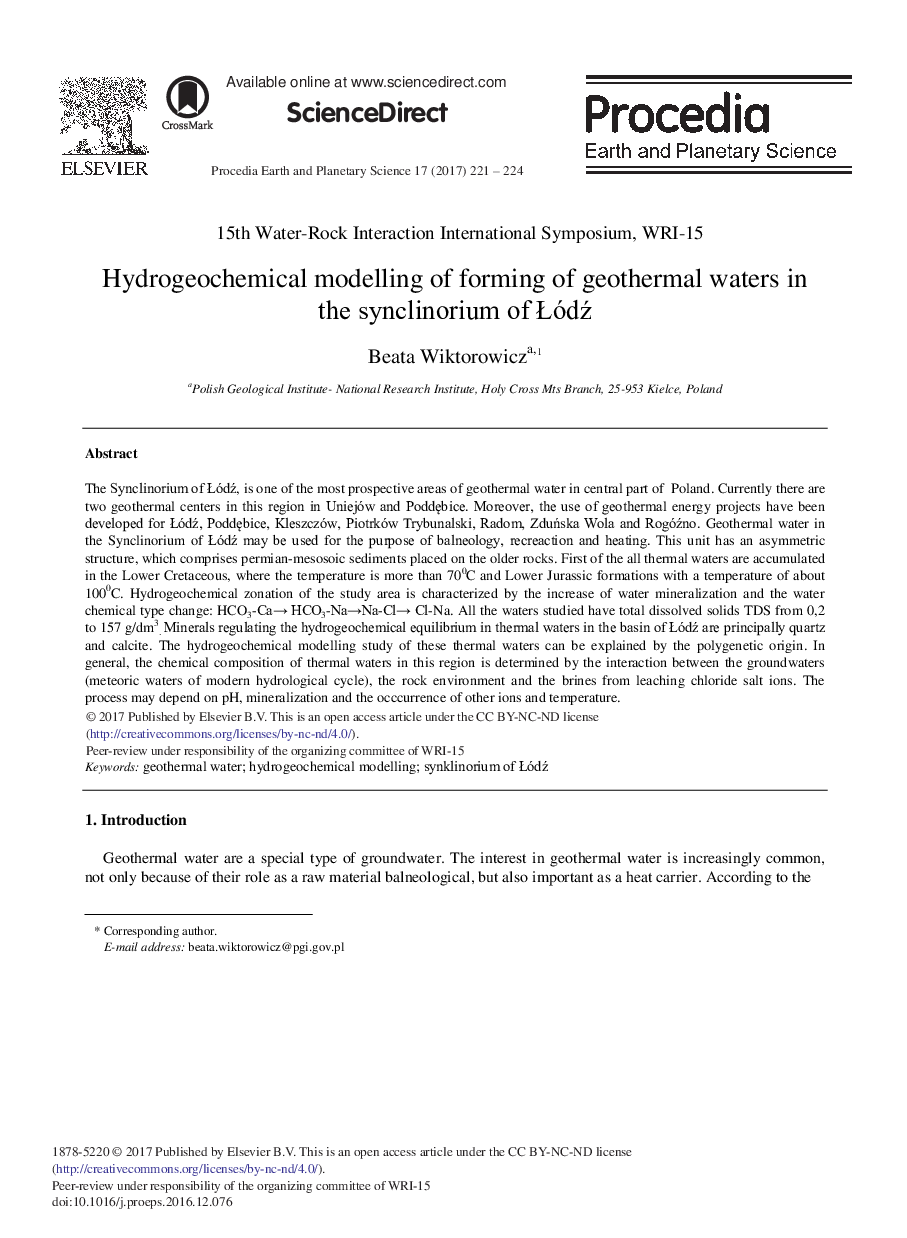| Article ID | Journal | Published Year | Pages | File Type |
|---|---|---|---|---|
| 5779274 | Procedia Earth and Planetary Science | 2017 | 4 Pages |
Abstract
The Synclinorium of Åódź, is one of the most prospective areas of geothermal water in central part of Poland. Currently there are two geothermal centers in this region in Uniejów and PoddÄbice. Moreover, the use of geothermal energy projects have been developed for Åódź, PoddÄbice, Kleszczów, Piotrków Trybunalski, Radom, ZduÅska Wola and Rogóźno. Geothermal water in the Synclinorium of Åódź may be used for the purpose of balneology, recreaction and heating. This unit has an asymmetric structure, which comprises permian-mesosoic sediments placed on the older rocks. First of the all thermal waters are accumulated in the Lower Cretaceous, where the temperature is more than 700C and Lower Jurassic formations with a temperature of about 1000C. Hydrogeochemical zonation of the study area is characterized by the increase of water mineralization and the water chemical type change: HCO3-Caâ HCO3-NaâNa-Clâ Cl-Na. All the waters studied have total dissolved solids TDS from 0,2 to 157 g/dm3. Minerals regulating the hydrogeochemical equilibrium in thermal waters in the basin of Åódź are principally quartz and calcite. The hydrogeochemical modelling study of these thermal waters can be explained by the polygenetic origin. In general, the chemical composition of thermal waters in this region is determined by the interaction between the groundwaters (meteoric waters of modern hydrological cycle), the rock environment and the brines from leaching chloride salt ions. The process may depend on pH, mineralization and the occcurrence of other ions and temperature.
Related Topics
Physical Sciences and Engineering
Earth and Planetary Sciences
Atmospheric Science
Authors
Beata Wiktorowicz,
